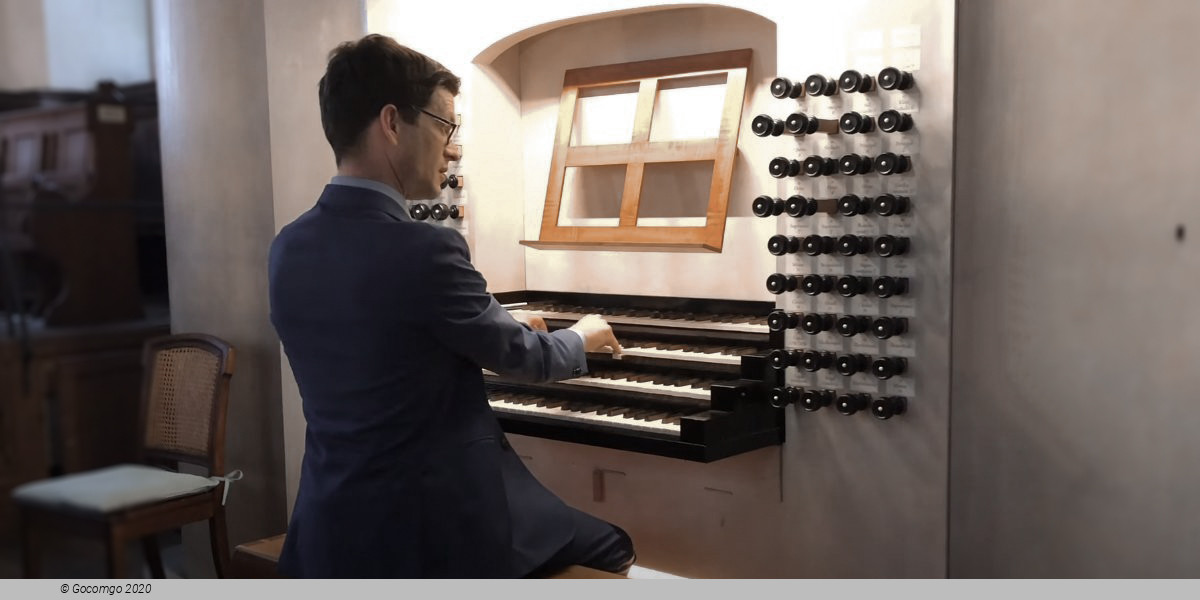St. Thomas’s Church (Leipzig, Germany)
St. Thomas’s Church

The St. Thomas’s Church, Thomaskirche is the second most important Church in Leipzig. The Church became world-famous thanks to the work of Johann Sebastian Bach, who lived in the city for a long time and served as a Cantor of the Church choir. The grave of the composer is also in the Church.
Works of art
The church features a number of works of art, including a baptismal font (1614-5) made by Franz Döteber and Portraits show the Stadtsuperintenden of Leipzig, the oldest dating from 1614. A crucifix made by Caspar Freidrich Löbel is one of the few remaining pieces from the times of Bach. The church also contains a number of notable epitaphs, such as the one for the knight Harras (d. 1451) and for councilor Daniel Leicher (1612). The colored windows in the choir were added after 1889. They show a number of historic motives: a memorial to the fallen of World War I, King Gustavus Adolphus of Sweden, Johann Sebastian Bach, Martin Luther with Elector Friedrich der Weise and Philip Melanchthon as well as Emperor Wilhelm I
Tomb of Johann Sebastian Bach
The remains of Johann Sebastian Bach have been buried in the Thomaskirche since 1950. After his death on 28 July 1750, Bach was laid to rest in the hospital cemetery of the Johanniskirche in Leipzig. With the start of the Bach renaissance in the 19th century, the public started to become interested in his remains and their whereabouts. So, in 1894, the anatomy professor Wilhelm His was commissioned to identify the composer’s remains amongst disinterred bones from the cemetery where Bach had been buried. He arrived at the conclusion that "the assumption that the bones of an elderly man, which had been found in an oak coffin near the Johanneskirche, were the remains of Johann Sebastian Bach" (translated from German) was very likely. On 16 July 1900 the bones were placed into a stone sarcophagus underneath the Johanniskirche.
Following the bombardment of the Johanniskirche on 4 December 1943, the bones were transferred to the Thomaskirche. The new grave with a bronze cover was inaugurated on 28 July 1950, 200 years after the death of the composer, who is now buried in the sanctuary of the Thomaskirche.
Organs
Another notable feature of the Thomaskirche is that it contains two organs. The older one is a Romantic organ by Wilhelm Sauer, built from 1884–89. Since this organ was considered "unsuitable" for Bach's music, a second organ was built in 1966/7 (by Alexander Schuke). This was later replaced in 1999/2000 by a new organ, built by Gerald Woehl's organ building company from 1999–2000. This "Bach organ" was designed to look similar to the instrument on which Bach had played in the Paulinerkirche.
Church bells
There are four bells in the St. Thomas bell tower. The largest is the Gloriosa, which was cast by Theodericus Reinhard in 1477. It weighs 5200 kg, has a diameter of 2.04 meters, and a strike pitch of a°. It is used on days of celebration. The second largest bell was cast by Wolf Hilliger in 1574 and has a strike note of c′. The third largest bell is called either the Monks’ or Confessional Bell (Mönchs- oder Beichtglocke), which has a strike pitch of d′. Jakob König cast it in 1634 and it serves as the hourly bell. The fourth bell was cast by Christophorus Gros in 1585 and has a strike note of f″. Its resonance is dampened by shortened yokes from which it hangs. The tower lantern holds separately a bell that is rung each quarter-hour. This bell was cast in 1539 by the Schilling bell foundry in Apolda. It was modelled on its predecessor.


